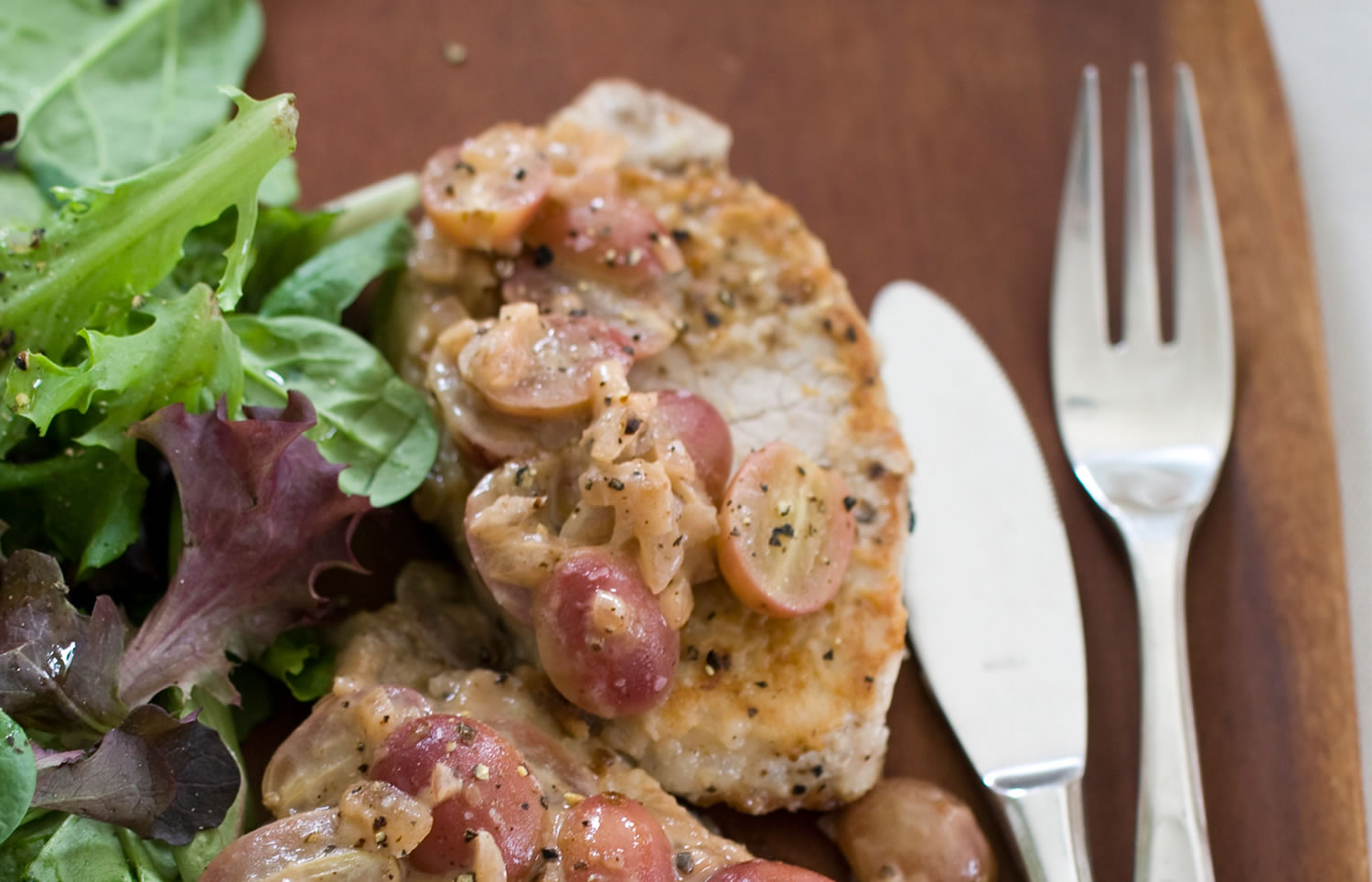When I was in high school, my mom and I threw all kinds of dinner parties.
OK, she threw the parties and I helped cook. Our go-to entree was veal scaloppine. I liked it no matter how we cooked it. At the time it seemed so fancy. Now I realize that it was all about the sauce. In its velvety blandness, veal really is little more than an excuse for sauce, a cake in search of frosting.
This recipe substitutes pork chops for veal. A generation ago, this switcheroo wouldn’t have worked; the chops would have been too rich. But modern-day engineering has turned pork chops into that other white meat. They have very little fat and, consequently, very little flavor. Fat is a conductor of flavor, as well as a provider of moisture.
Accordingly, one of today’s standard-issue supermarket pork chops is nearly as suitable as veal as a vehicle for sauce — and it’s cheaper, too.



